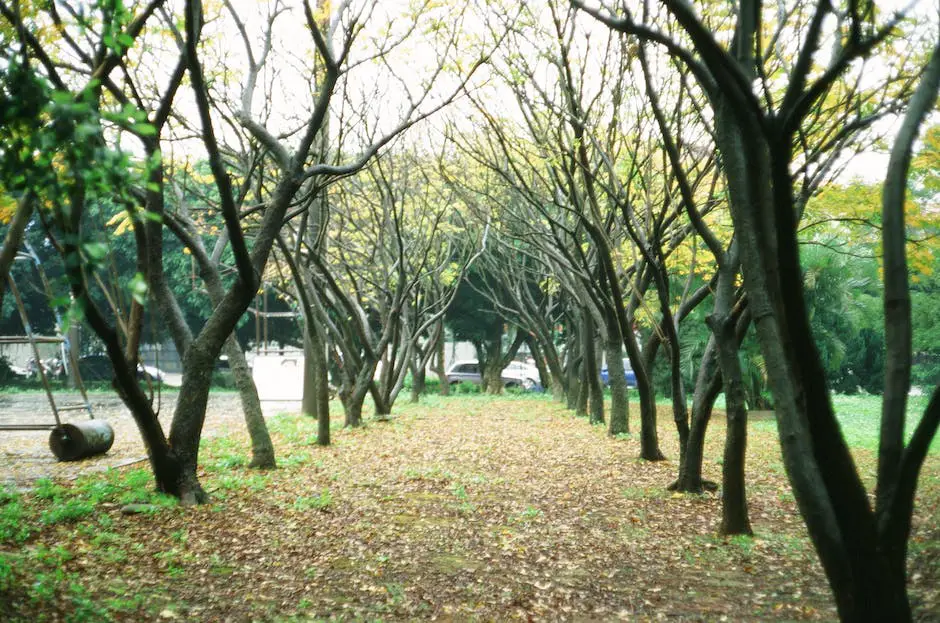Fast-growing trees not only add a touch of nature’s charm to our surroundings but also serve as a practical solution for enhancing privacy in our homes and gardens. Utilizing them helps in creating a natural, green barrier from prying eyes, simultaneously offering a serene and picturesque oasis. However, to unlock the full potential of these arboreal assets, one must understand the intricate dynamics underlying their selection, cultivation, and placement. The right knowledge about the species, their growth rates, their specific care needs, and their pinnacle heights is integral for successful implementation. Furthermore, understanding the regional climate and local fauna further contributes to their healthy growth. Let’s embark on this enriching journey towards fostering fast-growing privacy trees.
Identification of fast-growing trees for privacy
Choosing the Right Type of Privacy Trees
When selecting fast-growing trees for privacy, it’s crucial to consider the species. Different species not only grow at different rates, but they also reach varying heights, which directly impacts how much privacy they will ultimately provide. Among the top choices for privacy are the Hybrid Poplar, Leyland Cypress, Green Giant Thuja, and the Spartan Juniper.
The Hybrid Poplar, for instance, is known for its rapid growth, reaching heights of up to 50 feet within just a few years. Similarly, the Leyland Cypress can rise anywhere between 3 to 5 feet per year, and it maintains a dense, green foliage year-round, making it an excellent choice for privacy.
Other types, like the Green Giant Thuja and Spartan Juniper, also gain height rapidly while requiring minimal maintenance. These species are also particularly resistant to pests and diseases, so they remain robust and advantageous for privacy.
Understanding Growth Rates and Ultimate Heights
When thinking about growth rate, keep in mind that most fast-growing trees add between 1-3 feet of growth per year. However, this will depend upon the specific species and the care it gets. Understand that faster growth often comes with a trade-off; faster-growing species are typically shorter-lived than slower-growing varieties.
The ultimate height also plays a vital role for privacy. Some trees, like the Leyland Cypress, can reach up to 60 feet, providing an immense privacy screen. Others, however, don’t get as tall but still provide adequate coverage due to their dense foliage.
Region-Specific Factors
Location-specific factors are another key consideration for selecting fast-growing trees for privacy. Your regional climate will strongly influence your tree selection as not all trees thrive in all environments.
For example, Green Giant Thuja trees thrive in USDA hardiness zones 5 through 9, making them suitable for a broad range of climates, from the cool of the Northeast to the heat of the Southeast.
Local fauna could also impact the trees’ growth and survival. Some trees might be favorites among local deer populations and could incur heavy damage as a result. It is advisable to choose deer-resistant trees or take measures to protect your trees in such cases.
Picking Speedy Growing Varieties for an Effective Privacy Screen
Understanding the ins and outs of different tree species, their rate of growth, as well as their size upon reaching adulthood, will assist you when selecting swift-growing trees for privacy. It’s crucial to account for your area’s climate, the local soil conditions, and possible interactions with the indigenous wildlife.
Making an informed decision based on these factors is the stepping stone to creating a natural barrier that not only provides privacy but also supports the surrounding ecosystem, benefiting local species and contributing to climate control efforts. Regardless of your preference for a continuous canopy or spaced out coverage, these rapidly-growing trees offer an eco-friendly solution that guarantees your privacy and peace of mind.
An essential thing to remember is that carefully choosing the suitable tree type could lead to faster growth and a higher survival rate, maintaining an enduring privacy while enhancing your surroundings with lush greens.

Cultivation and care of fast-growing trees
Comprehending the Developmental Phases of Swift-Growing Trees
Rapid-growing trees undergo numerous stages from the moment they enter the ground until they reach their mature height. The journey from saplings to mature trees mainly include the seedling stage, sapling phase, and the fully grown tree stage. Some swift-growing trees such as the Hybrid Poplar and the Willow Hybrid can extend up to 10 feet in a year, reaching full maturity in just a couple of years. There are other species too, like the regal Royal Empress Tree and the revered Thuja Green Giant, known for their quick development and providing an effective privacy screen.
Optimal Soil Requirements For Fast-Growing Trees
The soil is one of the most important factors that influence the growth of trees. Fast-growing trees generally require soil that is well-drained and rich in organic matter for optimal growth. The pH of the soil should ideally be slightly acidic to neutral, but the exact pH requirement may vary depending on the tree species. For example, the Lombardy Poplar prefers slightly acidic soil, while Thuja Green Giants can tolerate a wider range of pH. Adding compost or other organic matter to the soil often enhances the soil’s nutrient content and promotes tree growth.
Appropriate Watering Techniques for Fast-Growing Trees
Fast-growing trees generally require regular watering until they are established, especially in their first year. Overwatering can easily stunt the growth or even kill the tree, so it is important to strike a balance. Watering should be deep and infrequent to encourage the development of deep roots. Moisture meters can be used to check the soil’s moisture content and ensure that the trees are getting just the right amount of water.
Sunlight Exposure Necessary For Fast-Growing Trees
Most fast-growing trees thrive in full sun, which means they should receive at least 6 hours of direct, unfiltered sunlight every day. Some species, like the Leyland Cypress and the Dawn Redwood, can also tolerate partial shade. However, providing ample sunlight generally promotes faster and healthier growth.
Strategies To Promote Rapid Growth In Fast-Growing Trees
Pruning is one effective strategy to promote rapid growth in fast-growing trees. When done properly, pruning encourages the tree to focus its resources on the most vigorous branches, promoting faster and denser growth. Fertilizing is another key strategy; using a slow-release fertilizer that is high in nitrogen can enhance growth rates. Additionally, addressing pests and diseases promptly can also prevent unnecessary setbacks and promote healthy, rapid growth.
Moreover, protecting the tree from harsh environmental conditions, especially when young, plays a significant role in its growth rate. This means providing windbreaks or using tree guards in windy locations, and using mulch around the base of the tree to conserve water and control weeds can also go a long way in promoting growth.
In conclusion, your efforts in understanding the proper cultivation and care for promptly growing trees can significantly promote their speed of growth and general wellbeing. Attentive care around aspects such as soil condition, sunlight exposure, watering needs, timely pruning, and protective steps will ensure that your trees will provide the desired privacy in a short period of time.

Tree placement for privacy
Tree Positioning for Optimal Privacy
The allure of personal privacy in one’s backyard is a concept that appeals to a great number of homeowners. Trees present an eco-friendly solution to achieve this privacy. However, planting trees haphazardly will not deliver the desired effect. Instead, strategic tree placement is pivotal in enhancing privacy. Therefore, maximizing the effectiveness of trees as privacy screens requires well-thought-out planning in regard to the size, spacing, and arrangement of the trees. By developing a dense wall of trees, homeowners can create an abundant, living barrier that serves to elegantly shield their property from passersby.
Understanding Tree Size and Spacing
Tree size is a vital factor when planning out your privacy barrier. The idea is to know how much space a tree will occupy at maturity. This will inform the space that should exist on either side of the tree. It will also determine how tall the tree will grow, and thus, how much coverage it will provide in terms of height. Similarly, understanding the optimal spacing between trees is essential. This will depend on the specific species of tree. Generally, trees should be spaced so they are touching at maturity to establish continuous coverage.
Efficient Arrangement of Trees for Maximum Privacy
The alignment of trees can significantly impact its effectiveness as a privacy buffer. A single row of trees might provide some level of shielding. However, for greater privacy, consider planting multiple rows of trees. This layering effect helps to block sight lines from multiple directions.
A staggered arrangement of trees could be another effective strategy. Trees in a staggered arrangement are planted in alternating rows. This creates a denser effect than merely planting a single row of trees and it also covers up any gaps between trees. By planting shorter trees in front of taller ones, you can add another layer of privacy coverage.
Seasonal Considerations
Seasonal changes necessitate forward-thinking when it comes to tree placement for privacy. Deciduous trees, for example, lose their leaves in autumn and stay bare until spring, providing little to no privacy during these seasons. Evergreen trees, on the other hand, retain their foliage year-round and offer consistent coverage. Planning for year-round protection is critical when considering which fast-growing trees to plant for privacy.
Understanding the growth speed, size, flowering and shedding season, and maximum height of the tree is key. Bamboo, Arborvitae, Hybrid Poplar, and Leyland Cypress are popular options for fast-growing privacy trees. These species are capable of growing multiple feet in a single year.
Developing an Effective Privacy Strategy with Fast-Growing Trees
Selecting trees for privacy requires a careful strategy that factors in tree characteristics, spacing, arrangement and seasonal changes. Learning to understand these aspects will enable any homeowner to cultivate a natural, effective privacy barrier around their property.

Maintenance and preservation of privacy through trees
Mastering Pruning Techniques for Fast-Growing Privacy Trees
Maintaining your privacy trees demands mastering a key aspect: proper pruning. Aside from refining the tree’s shape, apt pruning fosters its growth and also mitigates the risk of diseases. For those trees that grow at a fast pace, they should undergo this process at least annually.
Pruning is best conducted during late winter or early spring, right before they start sprouting new leaves or branches. Begin by eliminating any branches that are dead or damaged. Your next step should be removing branching that cross or rub together. Ensure all your cuts are made at a 45-degree angle to prevent water from gathering on the cut surfaces, thus preventing disease.
If your primary goal is to boost your tree’s height for enhanced privacy, concentrate on pruning its sides rather than the top. When trimming the branches, aim to make the tree narrower at the top than its bottom to allow sunlight exposure for all parts. Be sure not to remove more than 25% of the tree’s branches during a pruning session, as excessive cuts can potentially compromise the tree’s health.
Disease Prevention for Privacy Trees
Prevention is always better than a cure. One way to prevent disease in privacy trees is by maintaining proper plant spacing. This encourages good air circulation and reduces the potential spread of diseases. Fast-growing trees are often susceptible to fungal diseases because their rapid growth can create dense foliage that harbor moisture.
Keep an eye out for signs of disease, such as discoloration, abnormal growths, or slimy coats on the leaves, branches, or trunk. If you spot any of these signs, promptly remove the affected parts and employ appropriate fungicidal treatments.
Mulching at the base of the trees can prevent spores in the soil from splashing onto the lower branches. Also, watering the trees at the base, rather than from above, can further reduce the likelihood of disease.
Pest Management in Privacy Trees
Fast-growing privacy trees can sometimes attract pests. Regularly examine your trees for signs of infestation, such as chewed leaves or a sticky residue, often a tell-tale sign of aphid infestation.
Where possible, use natural pest remedies or biological controls such as beneficial insects. When using chemical treatments, select ones that are least harmful to beneficial insects to maintain a balanced ecosystem.
Helping Fast-Growing Trees Stay Robust and Continue Providing Privacy
Making sure your privacy trees stay healthy and vibrant ultimately ensures they provide the privacy you desire. Regular watering, especially in dry spells, is crucial for their well-being. Periodic fertilization also boosts their growth and resistance to diseases and pests.
Plant the trees in a location where they can get full to partial sun, as most fast-growing species require plenty of sunlight. Protect them from strong winds to prevent damage, especially when they are young and less sturdy.
Finally, avoid planting these trees too close to buildings or underneath power lines, as their fast growth might create problems in the future.

As our journey concludes, it is evident that taking care of fast-growing trees for privacy is an ongoing process that requires a thorough understanding and careful consideration of several factors. It, however, presents a fulfilling and rewarding endeavor in the form of a private, verdant retreat directly at your home. Appropriate procedures, periodic evaluations, constant care, and strategic arrangements not only ensure the fastest growth, but also the longevity and health of your living barrier. Disease prevention and pest management play a pivotal role in the preservation of these natural barriers. Therefore, by equipping yourself with the right knowledge and skills, you can cultivate a lush, green, and private environment for you and your loved ones.




